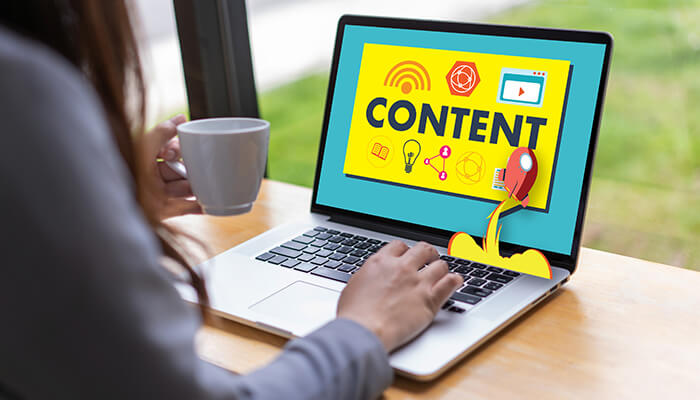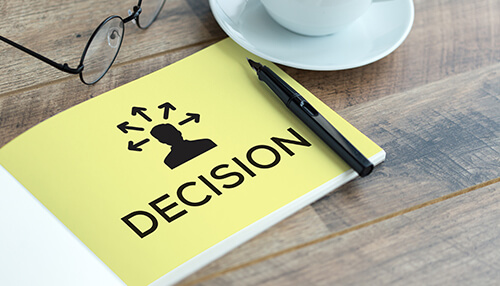If you are a digital marketer, then chances are that you have done some content marketing. However, content marketing is much more than simply writing about your brand, product, and service. With the right strategy, content marketing is a popular and powerful way to get your message out in front of your audience, build relationships and trust, and convince people to engage with your brand, website, product, or service.
However, there is also an overwhelming aspect to content marketing. You might be working with many content types, such as blog posts, eBooks, newsletters, white papers, videos, case studies, and more, and wondering where to put it all. The first question is which type of content is the best fit for your audience; what will connect with them, engage them, and inspire them to become a customer?
It’s possible to anticipate the kind of material that will work best for your company by looking at how people develop a relationship with your brand over time, known as the buyer journey. Once you understand this better, it will become easier to determine which kinds of content will be most helpful for people throughout each stage. Once you understand the goal of your content you can begin planning how you will create and format your whitepaper to use in the various stages on the buyers journey.
What is the Buyer Journey?
Understanding the right types of content to use can be quite complicated. However, once you better understand how to employ the buyer journey concept in your content strategy, you can significantly increase your success in digital marketing.
The buyer journey refers to a framework that maps out the various steps that somebody goes through, from discovering a problem they have, researching the problem, and eventually, purchasing a product or service that will be a solution to it.
There are three main stages to the buyer journey. These are:
- Awareness
- Consideration
- Decision
Awareness
During the awareness stage, the potential customer usually deals with a problem. They may be aware that this is frustrating for them but not sure whether it is unique or exactly what might be causing it. This is usually the stage where somebody might search for the symptoms of the problem that they have to better understand what might be behind it.
In this stage, people are not usually ready to be sold to. However, any source that can help them understand their problem better will likely be received well. This is an ideal time to make people aware of your brand by providing information that helps them understand what they are dealing with. The best way to do this is to figure out which search queries they are using and optimize helpful content around it.
Consideration
During this stage, potential customers now have a better understanding of what’s causing their problems. They may have moved on to researching and looking for the different solutions that are available to them. How and where they conduct these searches will depend on the type of information that they receive during the awareness stage.
Most buyers are still not fully ready to make a purchase during this stage, but they may be willing to try things out. This stage is an excellent opportunity to push product demos, start free trials, or provide solution-oriented content such as eBooks.
Decision
The final stage is the decision stage, where potential customers now have a selection of products or services that might be the right solution. They have a good idea of what they are looking for in a solution and are at a point where they are looking for something that will tick all the boxes for them. Once this stage ends, the buyer will likely make a purchase.
During the decision stage, your main goal is to persuade your potential customers to purchase your product or service rather than one offered by a competitor. Content you create for this stage should be in-depth about the benefits of your solution and provide substantial and clear evidence that it is an ideal solution. For example, this stage is a good option for case studies, where you can demonstrate how your product or service has helped others with similar problems.
Mapping Your Content
For each content asset that you create, whether that’s a web page, video, case study, blog post, eBook, or anything else, the main step is to determine where it is going to fit in throughout the buyer journey, and how effective it is going to be to move the potential customer through the stages. Doing this allows you to identify any content gaps that might be present in your funnel, along with optimizing your content according to where it fits best.
A content audit is the best way to achieve this. The main goal of this process is to help you get a more complete picture of the content you currently have running, how well it is performing, what kind of content you have planned for the upcoming weeks and months, and how well that is expected to perform.
Establishing Goals for Your Content
Mapping content to the buyer journey allows you to be more effective in drawing visitors through the sales funnel. You can do this by presenting them with the content they need at just the right time, making it easier for them to take the next steps necessary for making a purchase.
Once you have determined where each piece of content belongs in the buyer journey, the next step is to ensure that these assets are performing as they should. To do this, you’ll need to decide on measurable goals. These could include:
- Activation: Turning visitors into subscribers
- Acquisition: Attracting new visitors
- Education: Engaging subscribers and providing them with something valuable
- Expansion: Encouraging subscribers to upgrade
- Revenue: Persuading visitors to make a purchase
- Referral: Encouraging visitors to share
Once you understand the buyer journey and how your content fits into each stage, it’s easier to plan out which content belongs where based on how valuable it is to the customer at their specific stage.



